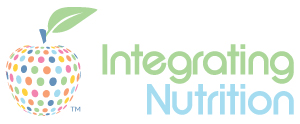Ok, sometimes you just gotta state the obvious: the intention of Thanksgiving is, well, to give thanks (duh.) Mindfulness, gratitude; these are all words related to the concept of Thanksgiving, yet they’re so overused these days that it’is easy to ignore their importance due to sheer repetition fatigue. And, of course, simply understanding a concept’s importance does not add up to much if we don’t know how to put the concept into action. So here’s how I try to bring mindfulness and gratitude to life in a meaningful, practical way.
Before getting to the gratitude part, let’s take a moment to look at the stuff that makes up the world around us. In order to make the most of something, we must first figure out it’s personal meaning to us. For example, let’s look at a pile of autumn leaves. Is a leaf-pile a good thing or a bad thing? Well, that all depends on how we look at it. Is this pile of leaves something to dread because of the raking job required to clean the lawn, or something to appreciate because of it’s seasonal multi-colored beauty, or is it something to look forward to because of the fun you’d have jumping into a crispy crunchy mountain of autumn leaves?
A term many people use is “reframing.” We “reframe” when we take charge of the meaning of the things in our lives, and change these meanings to support our own upliftment. As in the case of the pile of autumn leaves, it is our interpretation that determines whether something is thought of as a reminder of unpleasant chores, or a reminder of happy events. We can opt to see the leaves as something that makes us happy. This doesn’t mean we need to lie to ourselves; the point is that if we can find the positive aspects in the things that make up our day, we will grow to be more positive.
How to put this into action is simple, (if not always easy): just choose to. Choose to reframe the day-to-day elements that pop up in life in a way that reflect their most positive aspects. Reject negative interpretations of daily life if more positive life-affirming interpretations are available.
The good news is that our ability to take this kind of control over the way we perceive the world becomes easier with experience; it’s sort of a spiritual muscle that strengthens over use and time. And as we get a more positive handle on the present-time, the future grows brighter (and the negative aspects of the past diminish.) The side effect of allowing our awareness to organize around the positive yields both automatic mindfulness and an ongoing perception of our own gratitude, a state of giving thanks that extends far beyond the third Thursday in November.
Happy Thanksgiving, everyone.




